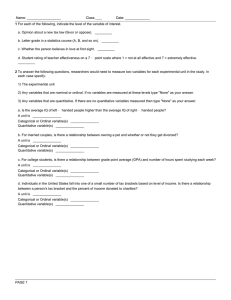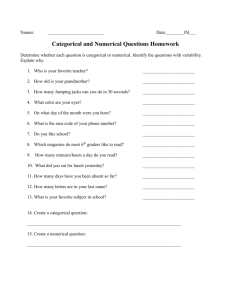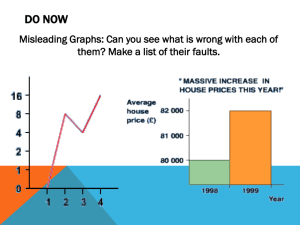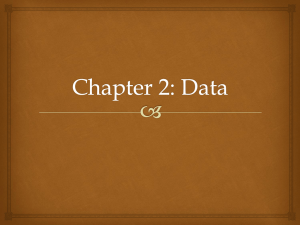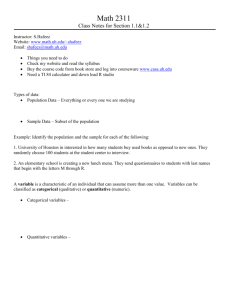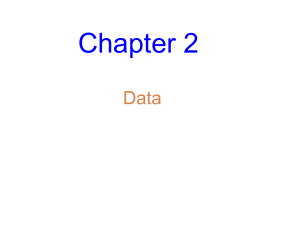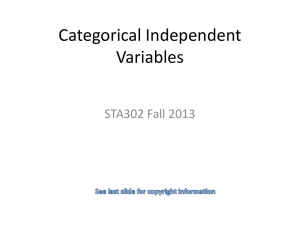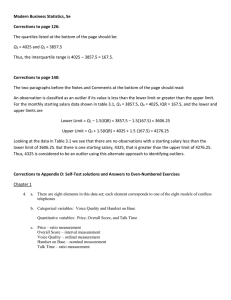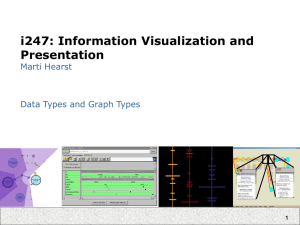What Are Data?
advertisement
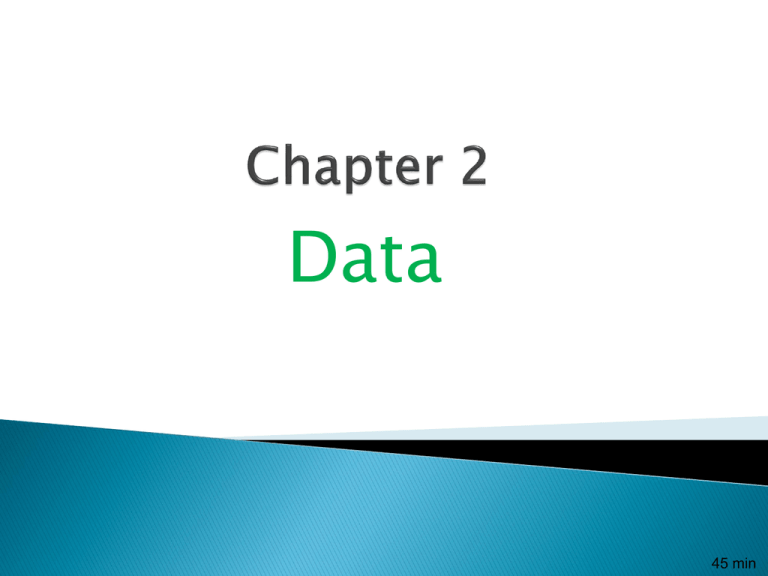
Data 45 min Data can be numbers, record names, or other labels. Not all data represented by numbers are numerical data (e.g., 1=male, 2=female). Data are useless without their context… To provide context we need the W’s ◦ Who ◦ What (and in what units) ◦ Why ◦ When ◦ Where ◦ and How of the data. The following data table clearly shows the context of the data presented: Notice that this data table tells us the What (column titles) and Who (row titles) for these data. The Who of the data tells us the individual cases about which (or whom) we have collected data. ◦ Individuals who answer a survey are called respondents. ◦ People on whom we experiment are called subjects or participants. ◦ Animals, plants, and inanimate subjects are called experimental units. Sometimes people just refer to data values as observations and are not clear about the Who. ◦ But we need to know the Who of the data so we can learn what the data say. Variables are characteristics recorded about each individual. The variables should have a name that identify What has been measured. A categorical (or qualitative) variable names categories and answers questions about how cases fall into those categories. ◦ Categorical examples: sex, race, ethnicity A quantitative variable is a measured variable (with units) that answers questions about the quantity of what is being measured. ◦ Quantitative examples: income ($), height (inches), weight (pounds) The questions we ask a variable (the Why of our analysis) shape what we think about and how we treat the variable. ◦ Example: In a student evaluation of instruction at a large university, one question asks students to evaluate the statement “The instructor was generally interested in teaching” on the following scale: 1 = Disagree Strongly; 2 = Disagree; 3 = Neutral; 4 = Agree; 5 = Agree Strongly. ◦ Question: Is interest in teaching categorical or quantitative? Question: Is interest in teaching categorical or quantitative? We sense an order to these ratings, but there are no natural units for the variable interest in teaching. Variables like interest in teaching are often called ordinal variables. ◦ With an ordinal variable, look at the Why of the study to decide whether to treat it as categorical or quantitative. Identifier variables are categorical variables with exactly one individual in each category. ◦ Examples: Social Security Number, ISBN, FedEx Tracking Number Don’t be tempted to analyze identifier variables. When and Where give us some nice information about the context. ◦ Example: Values recorded at a large public university may mean something different than similar values recorded at a small private college. ◦ Example: A survey was conducted 10 years ago is almost meaningless. How the data are collected can make the difference between insight and nonsense. ◦ Example: results from voluntary Internet surveys are often useless The first step of any data analysis should be to examine the W’s And, make sure that you know the Why, Who, and What before you proceed with your analysis. Data are information in a context. ◦ The W’s help with context. ◦ We must know the Who (cases), What (variables), and Why to be able to say anything useful about the data. We treat variables as categorical or quantitative. ◦ Categorical variables identify a category for each case. ◦ Quantitative variables record measurements or amounts of something and must have units. ◦ Some variables can be treated as categorical or quantitative depending on what we want to learn from them. Page 16 -18: # 1, 3, 7, 11, 13, 15, 19, 21, 25. Example:


